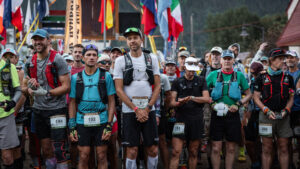Hardrock 100 is one of the most popular ultramarathons in the US. Set in the San Juan mountains in Colorado, athletes race for 102.5 miles across a total of 20,236m (66,394ft) of elevation change. However, it isn’t just the colossal elevation that makes this one of the hardest ultramarathons, but the altitude. The entire race with an average of 3,400m (11,154ft) elevation. This means that altitude is another thing to worry about aside from heat exhaustion, downpours and stormy gales.
This year exceeded expectations more than most, with new course records from both the male and female winners. So, we caught up with Hardrock 100 Race Director Dale Garland to discuss this year’s results and the highlights of the race.

Can you tell us a bit about the history of the Hardrock 100?
The Hardrock was created to showcase the majesty of the San Juan Mountains. It’s a celebration of the “wild and tough” lives of the hardrock miners who lived and made their living in the San Juans. It provides a challenging, off-road experience for ultra runners. There was an original group of 5 that put the course and event together and we ran the inaugural Hardrock in 1992.
What are some of the highlights of the course?
The Hardrock course is run at an average elevation of over 11,000 feet above sea level. It’s the equivalent of running from sea level to the top of Mount. Everest and back. Some highlights along the way include: Handies Peak the highest point (14,058 feet above sea level) and Grant-Swamp Pass. Many consider this the spiritual “centre” of Colorado. It’s here that there are memorial plaques of some of the Hardrock family who have passed away have had their ashes spread.
Where are the checkpoints and what support is available?
There are four legs of the race: Lake City, Ouray, Telluride, and Silverton areas. The course is run in opposite directions each year (clockwise, counter clockwise). Hardrock annually has 14 or 15 aid stations, depending on the direction of the run, and these together comprise the largest group of volunteers. Each aid station will have an Aid Station Captain (ASC) and crew of 6 to 30 volunteers. Some stations are right off a paved road, some require 4 Wheel Drive, and some can only be reach by hiking in. You can find out more about the aid station facilities here.
Support the whole team who put all this together
This is premium stuff! Subscribe for ONLY 99p for ALL online content!
Subscribe
Get right to the heart of ultra-running featuring interviews and podcasts with world class athletes, extraordinary race directors, ultra-running coaches, nutritional experts and in depth race reviews from around the globe!Get your access now